Posts Tagged: grasshopper
Katy Did, Katy Didn't!
I've always rather liked katydids. Anyone who is called "Kate" or "Katy" in their childhood usually winds up with "Katydid" as a nickname. And...
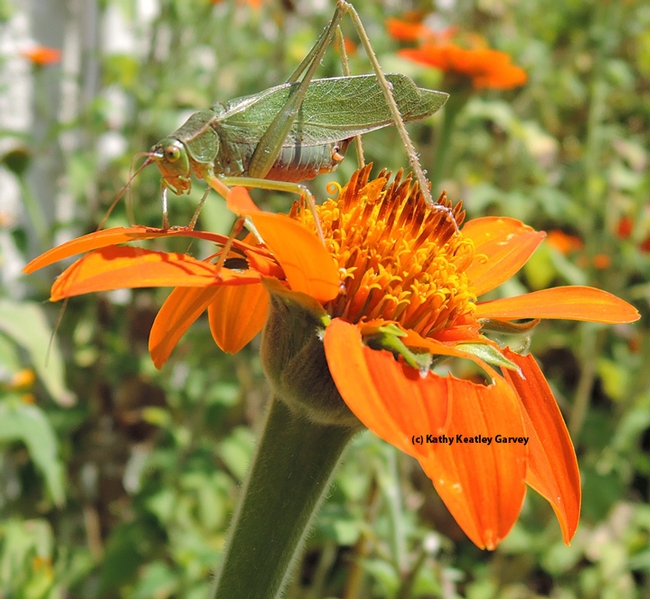
A camouflaged katydid, its body resembling a leaf, feeds on a Mexican sunflower, Tithonia. (Photo by Kathy Keatley Garvey)
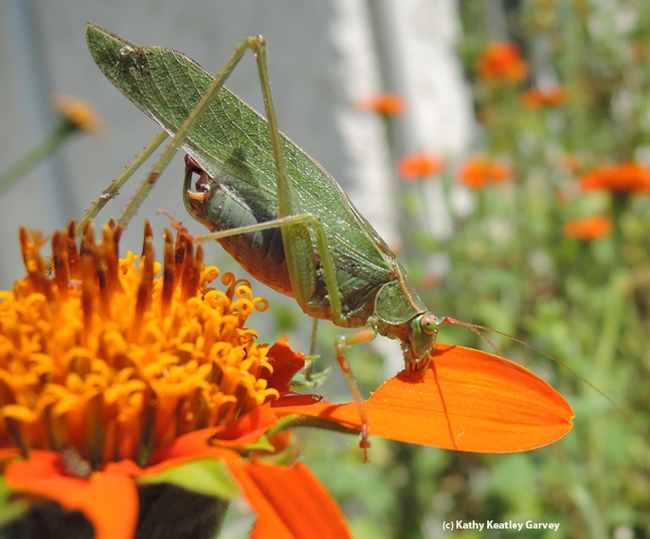
The katydid bends to feed on a Tithonia leaf. (Photo by Kathy Keatley Garvey)
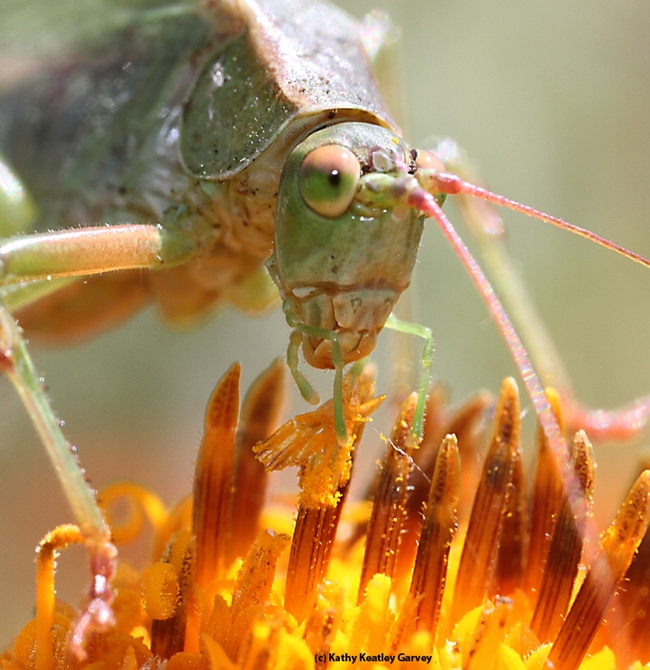
Close-up view of a katydid. (Photo by Kathy Keatley Garvey)
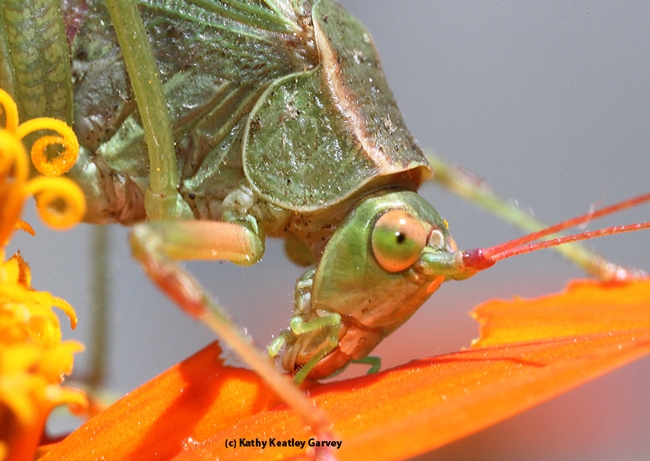
The katydid continues to feed. (Photo by Kathy Keatley Garvey)
A Buggy New Year!
It's a buggy new year! One of the fascinating things about beginning the new year is the Entomological Society of America's "World of Insects"...
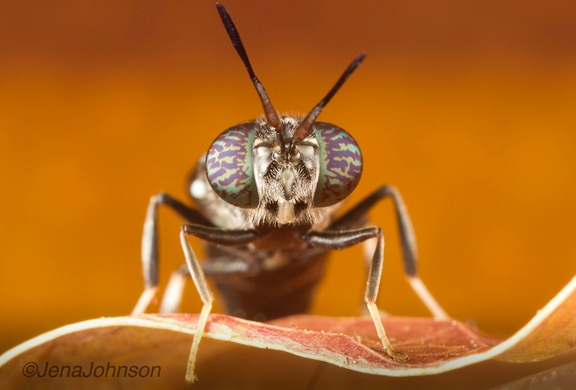
This photo of a black soldier fly, by Jena Johnson, is "Mr. October" in the ESA calendar. (Photo by Jena Johnson, used with permission)
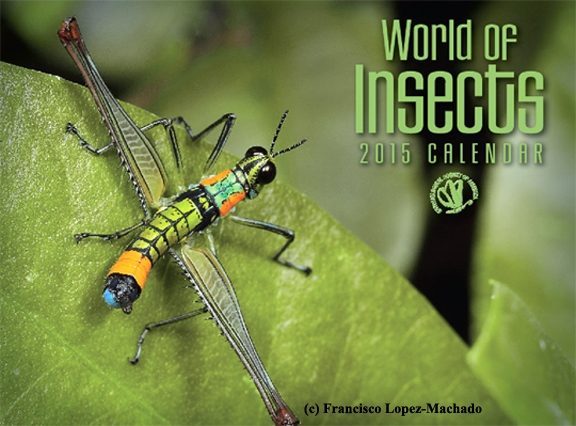
The ESA calendar cover features this clown grasshopper by Francisco Lopez-Machado of Cali, Colombia. (Photo courtesy of ESA)
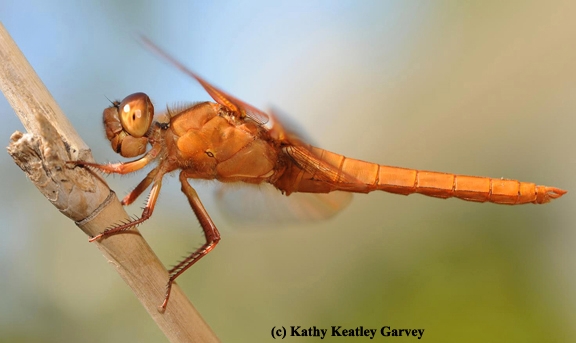
"Mr. December" in the ESA calendar is this image of a flameskimmer dragonfly, taken by Kathy Keatley Garvey of UC Davis.
Katydids in My Yard?
A few weeks ago I was out admiring my daylilies and noticed what, at first glance I thought was a mantid. Excitedly I ran for my camera. However, as soon as I began to really look at my "mantid" I became suspicious. The forelegs weren't those I expected. And, hold on, those were definitely the legs of a jumper! So what I really had was either a katydid or a grasshopper. I was not nearly as happy as I had been a few moments before.
In doing a little research, I learned that the true katydid (Tettiginiidae) is a relative of the grasshopper, but not actually a grasshopper. The katydid is green, grows to 2 or more inches in length and has oval-shaped wings and long black-and-white antennae. It lives where there are lots of trees and shrubs, which provide its food, preferably deciduous trees, and especially oaks. The eggs hatch in the spring and the katydid goes through several molts, becoming more and more adult with each molt. Interestingly, while they can fly they do so only for short distances, preferring to walk or climb to reach their next meal.
Well, my little specimen was in our front yard directly under our Valley Oak (Quercus lobata) and fit every description of a katydid--except that I could not really identify its oval wings. So, what to do?
In checking the UC IPM website, I learned that in a healthy garden parasites will attack the katydid eggs, thereby keeping them under control. Clearly I don't have an infestation, so I guess I'll let nature take its course.
Oh, and by the way, a few days later I noticed several carefully scalloped leaves on the roses in my back yard. Hmmm....could that katydid have been feasting on a few things besides the oak! (Actually this turned out to be leaf utter bee "damage". Leafcutter bees are beneficial insects.)
Resources
http://www.fcps.edu/islandcreekes/ecology/true_katydid.htm
Wikipedia (grasshoppers)
www.ipm.ucdavis.edu
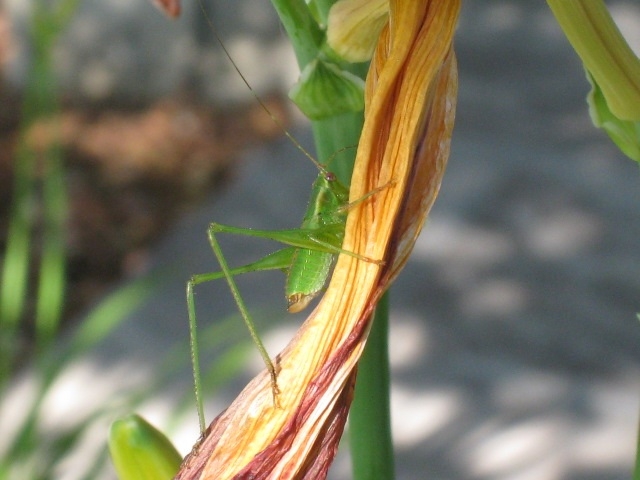
Katydid. (Photos by Marian Chmieleski)
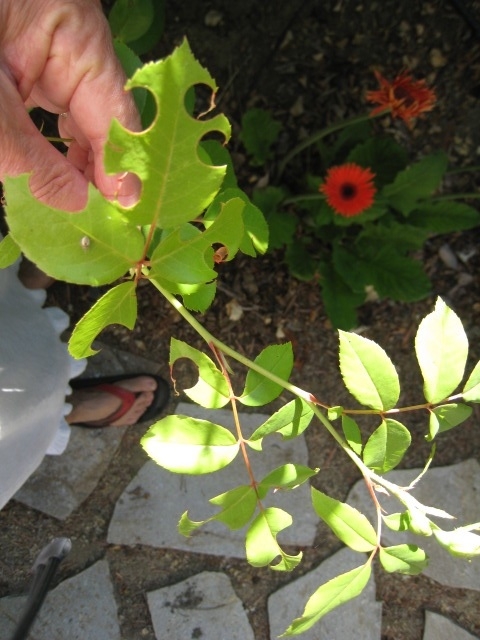
Beneficial leafcutter bee "damage".
Hop to It!
What's that hopping on our patio? At first we thought it was a grasshopper. Not! It was a katydid, sometimes called a "long-horned grasshopper,"...
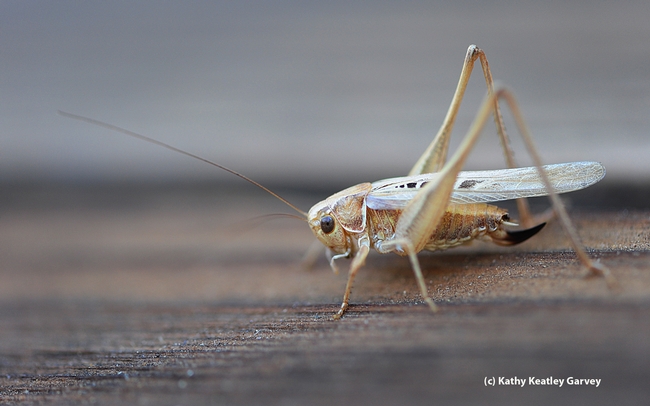
A katydid, or "long-horned grasshopper," from family Tettigonliidae. (Photo by Kathy Keatley Garvey)
It Pays to Be a Relative
Plants communicate. They do. Ecologist Richard Karban, a professor in the UC Davis Department of Entomology, points out that one of the simplest...
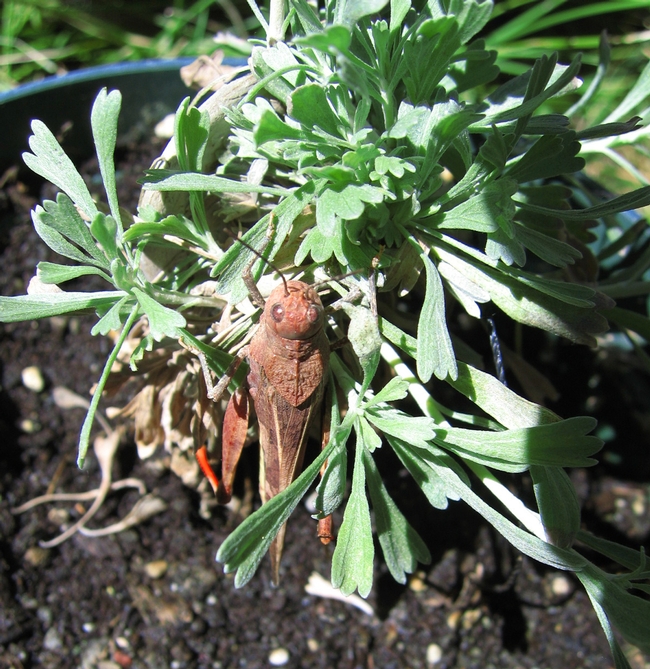
Grasshopper feeding on sagebrush. (Photo courtesy of Rick Karban)
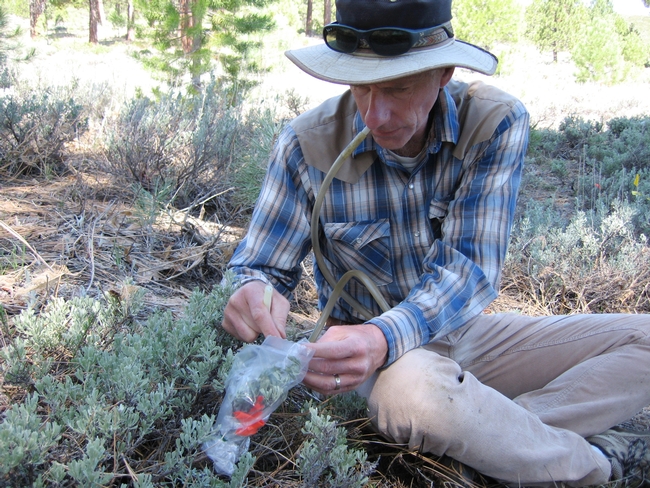
Rick Karban collecting volatile (chemical) cues.

